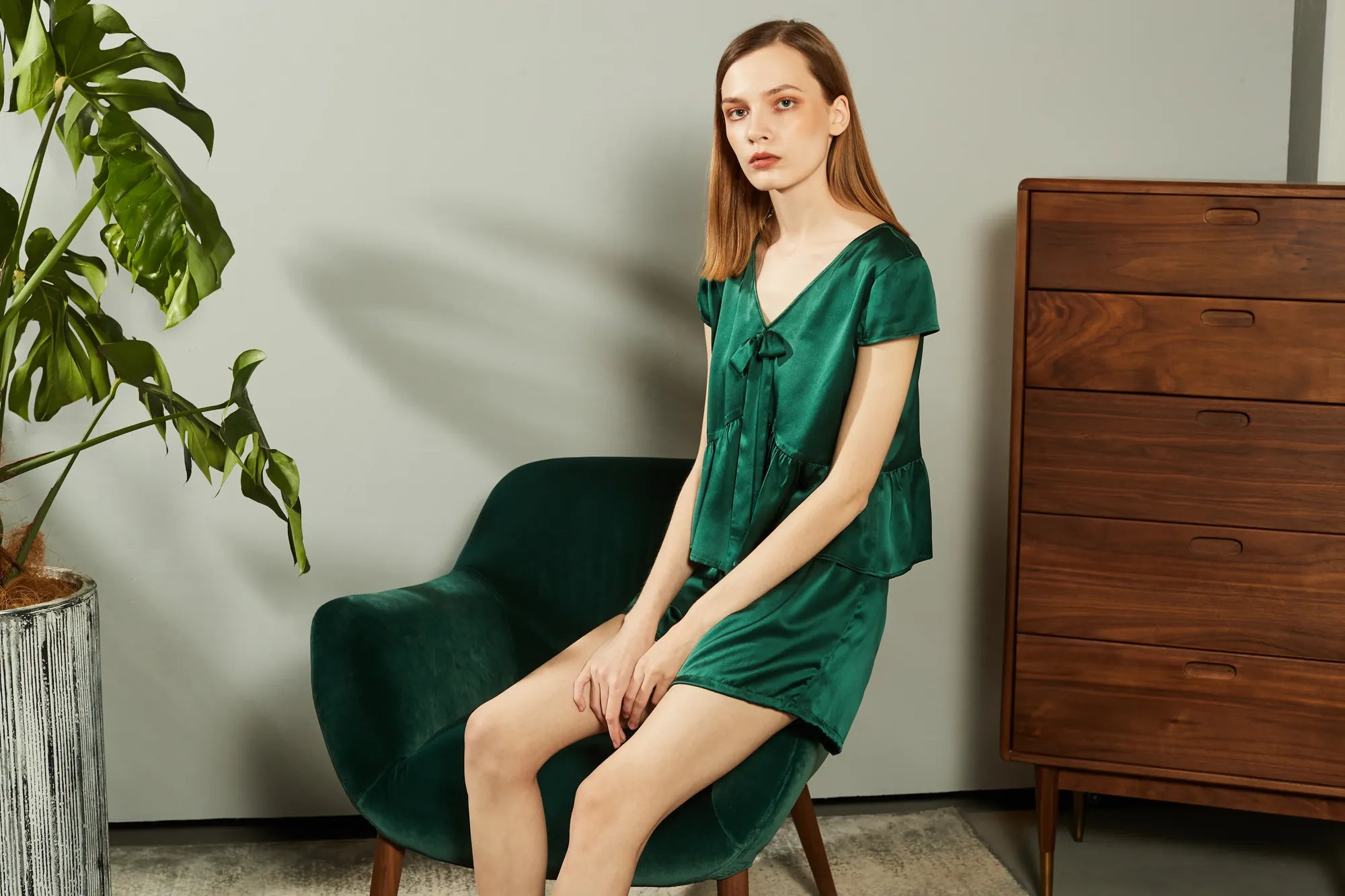Should You Sleep on Silk or Satin Pillowcases? The Ultimate Guide to Better Skin and Hair
- ved wangfred
-

Imagine waking up to smoother hair, fewer wrinkles, and a complexion that glows—all by simply changing your pillowcase. The debate between silk and satin pillowcases has sparked curiosity among skincare enthusiasts and haircare experts alike. While both fabrics promise luxurious benefits, their differences could make or break your beauty sleep. Let’s dive into the details to help you decide which one deserves a spot on your bed.
The Fabric Face-Off: Silk vs. Satin
At first glance, silk and satin pillowcases might seem interchangeable, but their origins and properties tell a different story. Understanding these distinctions is key to making an informed choice for your nightly routine.
Silk: The Natural Luxury
Silk is a protein-based fiber produced by silkworms, renowned for its:
- Hypoallergenic properties
- Temperature-regulating abilities
- Natural moisture retention
This breathable fabric creates a gentle surface that reduces friction, helping to prevent sleep creases and hair damage.
Satin: The Smooth Synthetic
Satin refers to a weave pattern rather than a material, often made from synthetic fibers like polyester. Its defining features include:
- High-shine surface
- Slip-resistant texture
- Budget-friendly price point
While satin mimics some benefits of silk, its synthetic composition may affect breathability and temperature control.
Skin Benefits: Which Fabric Comes Out On Top?
Your pillowcase interacts with your skin for hours every night—here’s how these fabrics compare in the skincare arena.
Reduced Friction, Fewer Wrinkles
Silk’s smooth surface glides against skin, minimizing tugging and compression that can lead to:
- Sleep lines
- Premature wrinkles
- Pillow creases
Satin offers similar friction reduction but may trap heat, potentially exacerbating nighttime sweating for some users.
Moisture Retention and Absorption
Silk’s natural fibers help maintain skin hydration by:
- Balancing moisture levels
- Preventing excessive oil absorption
- Reducing irritation for sensitive skin
Satin’s synthetic fibers might absorb more skincare products, potentially reducing the effectiveness of overnight treatments.
Hair Health: The Tangle-Free Truth
Both fabrics claim to prevent bedhead and breakage—but which one truly delivers?
Frizz Prevention
Silk’s natural texture helps:
- Maintain hair’s natural oils
- Reduce static electricity
- Preserve hairstyle longevity
Satin provides comparable frizz control but may generate more static in dry environments.
Breakage and Split Ends
The reduced friction from both fabrics helps prevent:
- Hair shaft damage
- Split ends
- Traction alopecia
Silk’s temperature regulation may offer additional protection for chemically treated or fragile hair types.
Beyond Beauty: Additional Considerations
While skincare and haircare benefits take center stage, other factors might influence your decision.
Durability and Care
Silk requires delicate handling:
- Hand-wash or gentle cycles
- Mild detergent only
- Air-dry flat
Satin pillowcases typically withstand machine washing and drying, offering convenience for busy lifestyles.
Environmental Impact
Natural silk production raises ethical concerns regarding:
- Silkworm harvesting practices
- Water usage in production
- Chemical processing
Satin’s synthetic fibers pose challenges with:
- Microplastic pollution
- Non-biodegradable waste
- Petroleum-based production
Cost Comparison
While silk generally commands higher prices, consider:
- Long-term durability
- Potential savings on hair/skincare products
- Frequency of replacement
High-quality satin options can provide similar benefits at lower price points for budget-conscious shoppers.
Making Your Decision: Personal Priorities Matter
Your ideal pillowcase depends on individual needs:
- Skin type and sensitivity
- Hair texture and treatments
- Sleeping position and habits
- Environmental values
- Maintenance preferences
Those with acne-prone skin might prefer silk’s natural antimicrobial properties, while hot sleepers could benefit from its temperature regulation. Curly hair types often favor satin’s stronger slip for preserving defined curls.
Expert Tips for Maximizing Benefits
Regardless of your fabric choice, enhance your results with these practices:
- Wash pillowcases weekly with fragrance-free detergent
- Replace pillowcases every 1-2 years
- Use protective hairstyles at night
- Combine with silk/satin hair wraps for extra protection
Remember that no pillowcase can replace a solid skincare routine or healthy sleep habits—think of it as one piece of your beauty puzzle.
Ready to revolutionize your beauty sleep? Whether you choose the natural luxury of silk or the practical smoothness of satin, your hair and skin will thank you for ditching that cotton standard. The secret to waking up gorgeous might just be hiding in your linen closet—are you ready to make the switch?












